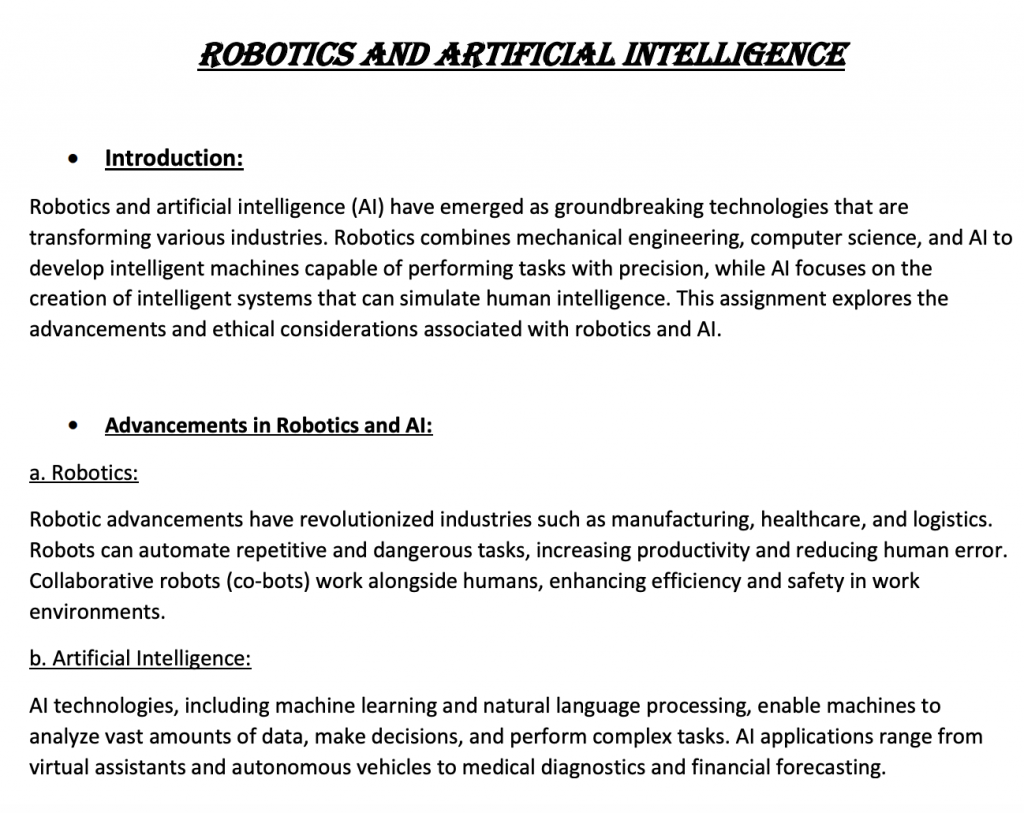Robotics and Artificial Intelligence
Summary:
The PDF titled “Robotics and Artificial Intelligence” explores the advancements and ethical considerations in robotics and AI. Robotics has revolutionized manufacturing, healthcare, and logistics by automating tasks and enhancing efficiency. AI technologies such as machine learning and natural language processing enable complex decision-making and have applications ranging from virtual assistants to medical diagnostics.
The paper also delves into ethical issues, including job displacement, bias, and discrimination. It emphasizes the need for upskilling employees and ensuring fairness in AI algorithms. Privacy and data protection are also highlighted as critical concerns. The paper calls for accountability and transparency in AI decision-making processes. It discusses the ethical dilemmas in human-robot interactions, particularly in healthcare settings like surgical robotics and elderly care.
The document concludes by advocating for ethical design principles and regulatory frameworks to ensure the responsible development and deployment of robotics and AI technologies. By prioritizing fairness, accountability, privacy, and safety, the paper argues that we can harness the full potential of these technologies while upholding ethical standards.
Excerpt:
Robotics and Artificial Intelligence
Robotics and Artificial Intelligence
Introduction:
Robotics and artificial intelligence (AI) have emerged as groundbreaking technologies transforming various industries. Robotics combines mechanical engineering, computer science, and AI to develop intelligent machines capable of performing tasks with precision. At the same time, AI focuses on creating intelligent systems that can simulate human intelligence. This assignment explores the advancements and ethical considerations associated with robotics and AI.
Advancements in Robotics and AI:
a. Robotics: Robotic advancements have revolutionized manufacturing, healthcare, and logistics industries. Robots can automate repetitive and dangerous tasks, increasing productivity and reducing human error. Collaborative robots (co-bots) work alongside humans, enhancing efficiency and safety in work environments.
b. Artificial Intelligence: AI technologies, including machine learning and natural language processing, enable machines to analyze vast amounts of data, make decisions, and perform complex tasks. AI applications range from virtual assistants and autonomous vehicles to medical diagnostics and financial forecasting.


Reviews